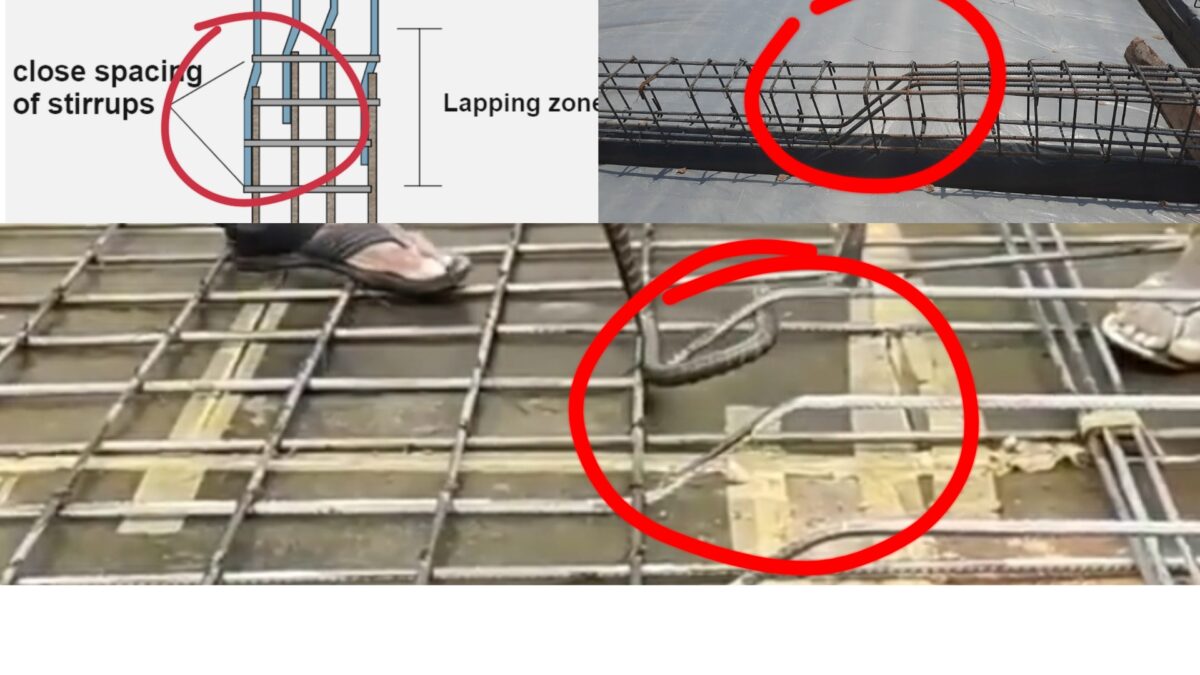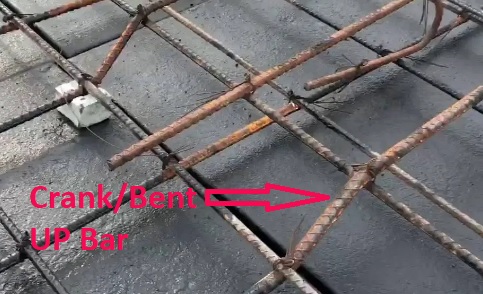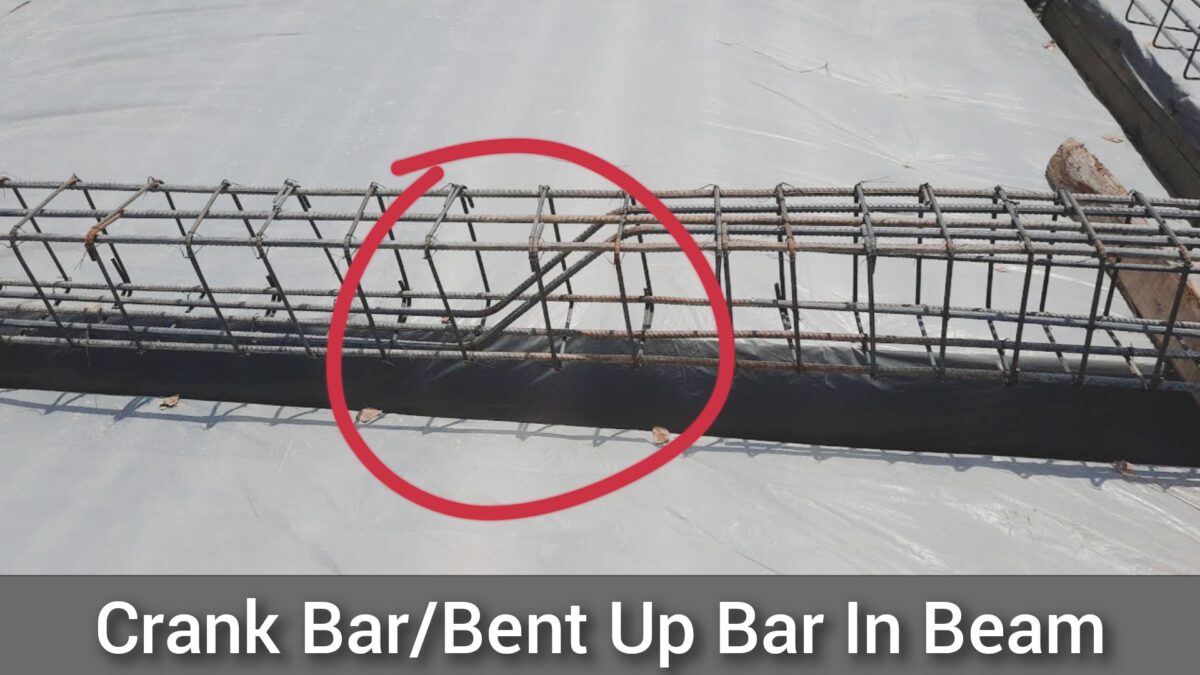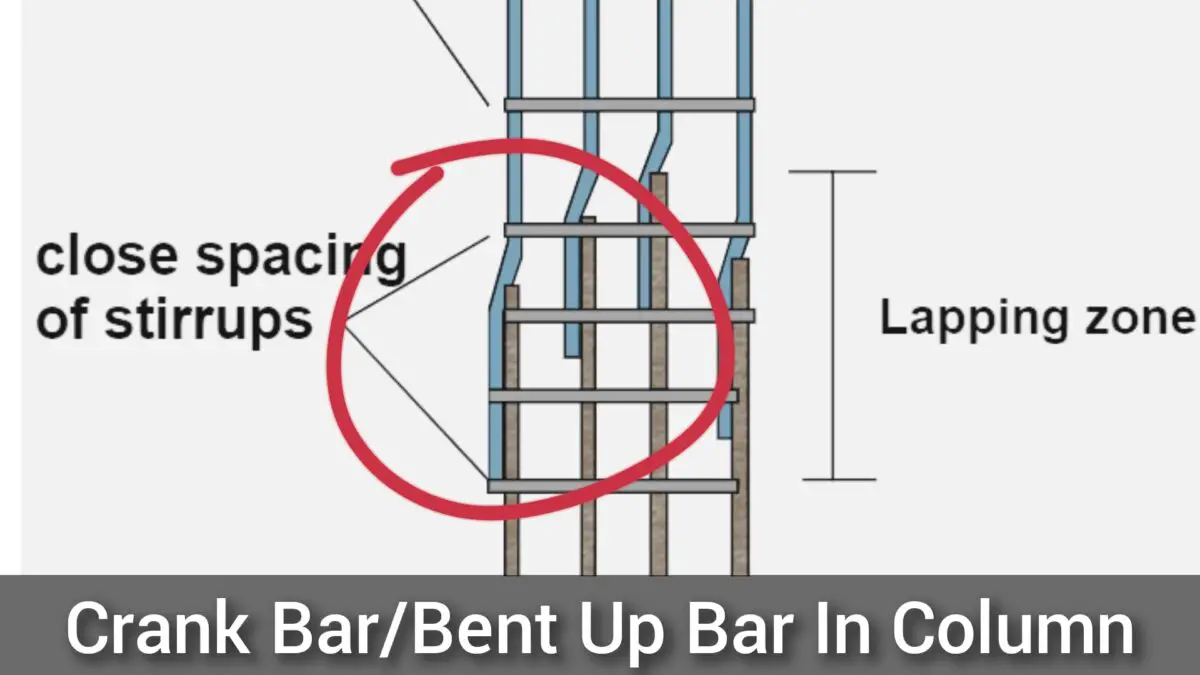In this article you will learn about crank bar in beam, slab and column. Crank bar also called as bent Up Bar. I will also describe why crank is provided.

Table of Contents
Definition
Crank Bar is also known as the Bent Up bar. It is provided on top of the reinforcement to resist negative bending moment/Hogging at the supports of the slab.
What Is Crank Bar?
Crank Bar provides near the end supports on the top of the slab. It can be provided in the middle if there is any mid-support provided.
Bars are bent near the supports normally at an angle of 45°. The angle bent may also be 30° in shallow beams where the (effective depth < 1.5 breadth).
Normally Crank bar is bent near the support at an angle of 45° to resist negative moments or hogging.
In the shallow beam, Crank Bar bent at an angle of 30°.

Now we know what is Crank Bar or Bent Up Bar. Let’s know the reasons why it is provided in the slab.
Importance Of Crank Bar
Reinforced concrete structures commonly use a reinforcing steel bar known as a crank bar, hook bar, or bent up bar. The purpose of a crank bar is to enhance the bond between the reinforcing steel and the concrete, providing extra strength, stability, and resistance to tension and shear forces.
The hooks or cranks on the bar increase the surface area for the concrete to grip onto, decreasing the likelihood of the steel pulling out of the concrete under load. Additionally, the hooks or cranks distribute the load more evenly along the bar’s length, reducing stress concentrations and strengthening the overall structure.
Different types of crank bars exist, each with a distinct design and function. For instance, the 90-degree bent up bar, which features a single 90-degree bend at one end, is often used to reinforce concrete slabs or beams. On the other hand, the U-shaped bar, with two 90-degree bends at opposite ends, is useful in reinforcing concrete columns or walls, providing extra strength and stability.
Apart from reinforced concrete structures, crank bars have several other applications. They are common in constructing bridges, tunnels, and other large-scale infrastructure projects. They are also useful in producing precast concrete items like concrete pipes and panels.
Designers of reinforced concrete structures must carefully consider the type and placement of crank bars, with factors such as the structure’s size and shape, anticipated loads and stresses, and project-specific requirements affecting the bars’ size and spacing.
Why We Provide Crank Bar In Slab?

- To resist the negative bending moment (hogging).
- To resist shear force.
- Crank bar reduces the risk of brittle failure.
- To decrease the total quantity of reinforcement in the slab.
- The crank bar prevents any deformation due to vibrations and dynamic loads in the slab.
- It reduces the risk of slab failure.
Why Crank Bar/Bent Up Bar Used In Beam?

In reinforced concrete beams, bottom bars are used to resist positive moments, while top bars with crank/bent up bars are provided near the supports to resist negative bending moments and shear stress.
The main function of the crank/bent up bar is to provide reinforcement on both the top and bottom of the beam and resist shear forces. The reinforcements are necessary to withstand both positive and negative bending moments. Crank/bent up bars are particularly effective in resisting negative bending moments at the end supports and positive bending moments in the middle of the slab.
Therefore, the use of crank/bent up bars in RCC beams is crucial to ensure the structural integrity and strength of the concrete structure.
Why Crank Bar Is Used In Column?

Crank or bent up bars are often used in columns to resist high shear forces when the spacing of vertical ties is too close.
While these bars are commonly used in beams to resist shear forces, they are also effective in columns when the shear force is too great for vertical ties alone.
Crank/bent up bars are designed to provide additional reinforcement and stability to the column structure. The use of crank/bent up bars in columns is a common practice in the construction industry to ensure the safety and durability of the building.
Sum Up
Crank bars are essential components of reinforced concrete structures, offering additional strength, stability, and resistance to tension and shear forces. Their versatility and unique design make them valuable tools in the construction industry, ensuring the safety and stability of structures worldwide.
